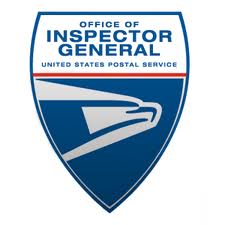OIG Audit: Limited Duty and Rehabilitation Employees Returned to Work
 This report presents the results of our audit of the U.S. Postal Service’s Limited Duty and Rehabilitation Employees Returned to Work (Project Number 13YG016HR000). The report responds to a request from the U.S. Postal Service’s Office of General Counsel due to a recent class action case that alleges violations of the Rehabilitation Act.1 Our objective was to determine whether Postal Service officials followed applicable policies and procedures when returning limited duty and rehabilitation employees2 to work. See Appendix A for additional information about this audit.As of December 2012, the Postal Service had 16,999 employees on the periodic roll and was facing a long-term workers’ compensation liability of $16.5 billion. To reduce these costs, the Postal Service initiated an effort to return limited duty and rehabilitation employees on the periodic roll to work in fiscal year (FY) 2013. As of June 2013, the Postal Service removed 3,888 employees from the periodic roll either because management identified a modified assignment within the employee’s medical restrictions, or the employee returned to full duty. Also included in this number are other actions processed by the Postal Service and the U.S. Department of Labor (DOL) that reduced or discontinued workers’ compensation payments, such as divorce, change in dependent status, disability separation, retirement, or death.The Postal Service’s policies and procedures for returning employees to work are outlined in the Employee Labor Relations Manual, which is consistent with federal laws and regulations.
This report presents the results of our audit of the U.S. Postal Service’s Limited Duty and Rehabilitation Employees Returned to Work (Project Number 13YG016HR000). The report responds to a request from the U.S. Postal Service’s Office of General Counsel due to a recent class action case that alleges violations of the Rehabilitation Act.1 Our objective was to determine whether Postal Service officials followed applicable policies and procedures when returning limited duty and rehabilitation employees2 to work. See Appendix A for additional information about this audit.As of December 2012, the Postal Service had 16,999 employees on the periodic roll and was facing a long-term workers’ compensation liability of $16.5 billion. To reduce these costs, the Postal Service initiated an effort to return limited duty and rehabilitation employees on the periodic roll to work in fiscal year (FY) 2013. As of June 2013, the Postal Service removed 3,888 employees from the periodic roll either because management identified a modified assignment within the employee’s medical restrictions, or the employee returned to full duty. Also included in this number are other actions processed by the Postal Service and the U.S. Department of Labor (DOL) that reduced or discontinued workers’ compensation payments, such as divorce, change in dependent status, disability separation, retirement, or death.The Postal Service’s policies and procedures for returning employees to work are outlined in the Employee Labor Relations Manual, which is consistent with federal laws and regulations.
Overall, Postal Service officials at the four districts we visited (Lakeland, Atlanta, Dallas, and Chicago) followed the established process to return injured employees to work. When management returned employees to work, they adhered to policies outlined in the Employee and Labor Relations Manual, which is consistent with federal laws and regulations. However, we noted that officials did not perform the required periodic reviews of 3 percent of case files we reviewed, and 6 percent of files reviewed did not contain documentation of employees acceptance of modified assignments. District Health and Resource Management (HRM) officials stated that it was an oversight due to increased workload and decreased staffing, including retirements and promotions, that made it difficult to manage cases for appropriate documentation.
**Judgmentally selected the Lakeland, Dallas, Atlanta, and Chicago districts for review. We selected the Lakeland, Atlanta, and Dallas districts because of their high number of limited duty and rehabilitation employees capable of returning to work. We selected the Chicago District because of its low number of limited duty/rehabilitation employees and high percentage of employees returned to work.We conducted this performance audit from January through September 2013
By not performing periodic reviews of employee case files, employees capable of working would continue receiving workers compensation. Also, when supervisors do not document employees acceptance of modified assignments, the employee could deny agreeing to the terms of the limited duty assignment, increasing the potential for future claims.
District HRM officials stated they did not perform all periodic reviews due to an oversight. They further stated that increased workload and decreased staffing from retirements and promotions contributed to the oversight. As a result, employees capable of working remain on the periodic roll, and the Postal Service incurs unnecessary workers’ compensation costs.
Although we identified one case file without evidence of a periodic review in the Chicago District, officials explained that they have a process called the “Blue Room,” a monitoring control worthy of consideration as a best practice throughout the Postal Service. This control, used to monitor absenteeism, also assists in returning injured employees to work. The district, Human Resources, HRM, and Customer Service Operations managers monitor all employees who are not actively working, and they also include limited duty and rehabilitation employees. They meet once a month to review the status of employees not actively working, which helps them manage their required periodic reviews. This practice could help other districts whose HRM specialists are not able to keep up with periodic file reviews due to workload and staffing issues.
In a previous audit, the U.S. Postal Service Office of Inspector General (OIG) found that the HRM staff has been reduced without sufficient justification, such as a formal staffing analysis. The OIG recommended, and management agreed to, conducting a formal staffing analysis to determine the number and type of employees needed to handle workers’ compensation claims, including district HRM specialists.